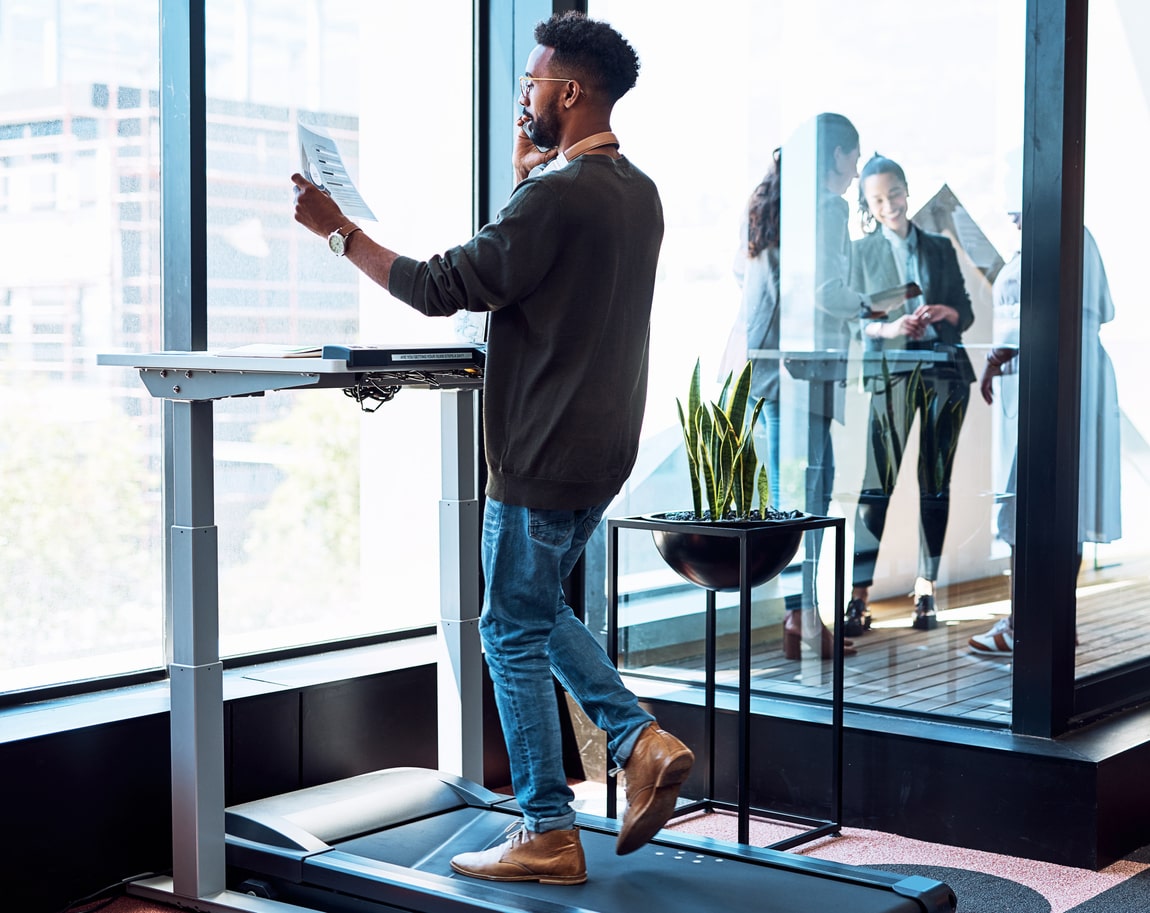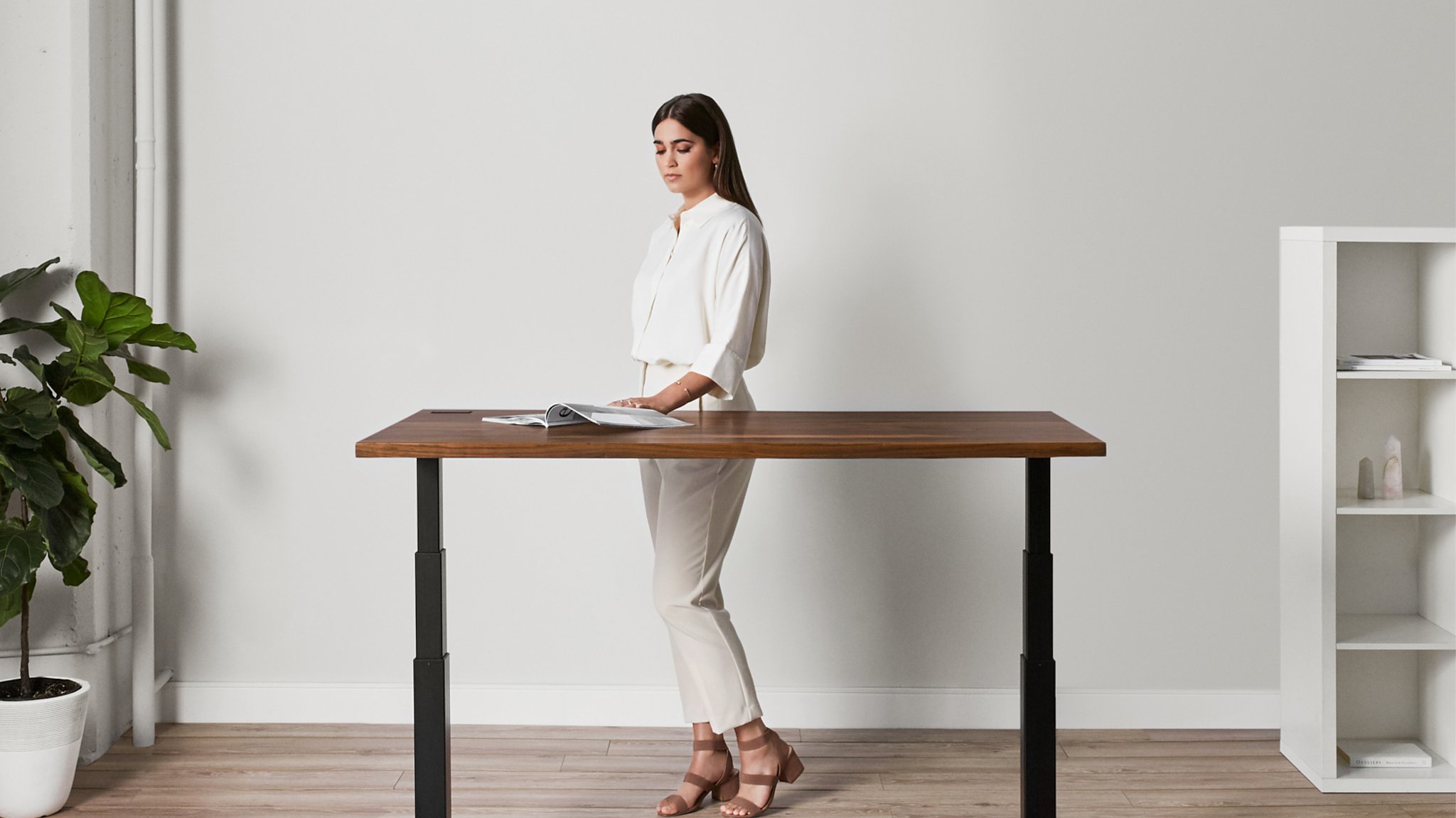
Sitting at a desk all day is bad for your health. However, when it comes time to find an alternative to a traditional desk, it can be hard to know what choice is best.
The two most common alternatives to a traditional workspace are standing desks and walking desks (also referred to as treadmill desks). Both of these alternatives have their pros and cons. Let’s examine a stand up desk versus walking desk to determine which is the better choice.
Standing Desks: The Pros & Cons
Pros
A standing desk is an excellent alternative to a traditional seated workspace. Many studies show that standing desks help individuals lower their risk of cardiovascular disease and metabolic syndrome. You’ll benefit from the ability to stand or sit throughout the day because the desk adjusts to your height.
Cons
However, while the benefits of standing desks are obvious, there are some drawbacks too. For example, long periods of standing with minimal movement, experienced by retail and foodservice workers, can lead to severe leg problems. Some of these include varicose veins, deep vein thrombosis, and on and on. You can counteract these negative effects with mats that relieve some of the pressure felt on ankles and knees as you stand around.
Walking Desks: The Pros & Cons
Pros
The other commonly explored alternative is a walking desk. A walking desk is a great answer to the problems that are presented as the limits of a standing desk.
These desks encourage consistent but not strenuous movement throughout the day. The continuous walking promoted by treadmills desks has been liked to lower NEAT, or “non-exercise activity thermogenesis” levels. Lower NEAT levels are linked to better overall health and lower the risk of diabetes in the average person.
Cons
That being said, too much walking can be a bad thing as well. Treadmill desks come with potential downsides of increased fatigue, and loss of productivity when it is time to type or input things into the computer.
The motion of walking takes both energy and balance, slowing down most people’s ability to input work into their devices.
Conclusion
While there are valid arguments on either side of the stand up desk versus walking desk debate, an ideal work routine includes movement, standing, and appropriate breaks for sitting.
Listen to your body when it wants to walk, when it is ready to stand, and when it needs to rest in a chair. Soon you’ll find the healthiest balance for you at your desk.
The Proper Way To Use A Standing Desk
Ultimate guide for setting your desk
“Remember, everyone is different and should be able to adjust their workspace to their own needs. Some of us have longer arms, or shorter legs. Some of us have weaker knees, or flatter foot arches. No matter what your specific needs are, the advantage of height-adjustable desks is their versatile nature – they can be customized to suit everyone.”




